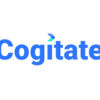-
About
- About Listly
- Community & Support
- Howto
- Chrome Extension
- Bookmarklet
- WordPress Plugin
- Listly Premium
- Privacy
- Terms
- DMCA Copyright
- © 2010-2024 Boomy Labs

 cogitateus1
cogitateus1
Listly by cogitateus1
Gartner Inc coined the term Nexus of Forces to describe the concept of how the collective power of four forces - social media, mobility, cloud computing and information patterns –is rapidly shifting the nature of digital business and creating new business opportunities.

Gartner Inc coined the term Nexus of Forces to describe the concept of how the collective power of four forces - social media, mobility, cloud computing and information patterns –is rapidly shifting the nature of digital business and creating new business opportunities. With great transformative impact individually, the intersection shows extraordinary potential for transmuting industries and pushing fresh opportunities for information innovation.
A key transition element for many industries, the nexus empowers insurance providers to alter and adapt business processes in real time through this blend of technology, data and analytics. Gartner also makes the case for strategic use of the nexus instead of piecemeal, incremental investment in the individual constituents. Many insurance providers have invested heavily on data insights, but the true potential of these forces lies in the future-focused insurerem bracing these advancements fully for a competitive edge.
Among the many advancements made possible through this confluence, one of the foremost is strengthening insurance fraud management systems by deploying innovative fraud technology and enhanced modeling. As insurance fraud grows more sophisticated, the nexus allows insurance providers to deploy more aggressive and proactive insurance fraud management systems. Innovative strategies that leverage a combination of data, new technologies and capabilities to support insurance fraud analytics and prediction hold rich potential for the innovative insurance provider.
Some key information innovations for reducing underwriting and claims fraud include predictive modeling and anomaly detection through enhanced analytical and prognostic capabilities. Business rules-based detection and classification supported by evidence-based data assist faster identification of fraud. Similarly, pattern detection and identification assist identification of new specious behavior and improve modelling.
Scoring algorithms that use historical and other claims data to generate the fraud probability score of a claim and predict probability of fraud are such advancement. Solutions based on complex machine learning models and neural networks are trained to identify and predict fraud using historical and other claims data, as well as learn new patterns of fraud and protect against future risks.
Early identification of fraud networks through social network and trend analysis helps in discovery of fraudulent parties involved in suspected fraud and in the creation of an association-based network graph based on location, address and individuals. Once a fraud collusion network is identified, multiple filters can be applied on the network graph to gather more data which may not be available via traditional BI practices and help further hone claims fraud analytics capabilities.
Cogitate Claims Fraud Network Analysis (CFNA) allows faster identification of fraud through the use of multiple scoring tools, neural networks and fraud collusion networks. CFNA uses artificial intelligence, machine learning, advanced insurance fraud analytics and social network analysis for claims fraud analytics and protects insurers against spurious claims.
Claims reflect in CFNA within 24 hours of the First Notice of Loss (FNOL) and with automated backend processing, fraud probability scores and network graphs are generated right at the FNOL stage. Segregating fraudulent and non-fraudulent claims to assist faster settlement of claims ensures enhanced satisfaction for the customer and significant economies for the insurer. Early referral of fraudulent claims to the Special Investigation Unit (SIU) and automated assignment to adjustors and SIU helps in faster claims settlement and brings further savings in operational costs for insurance providers.
To learn about the many ways Cogitate can help insurance carriers reduce loss ratio and bring in significant savings, contact us today
